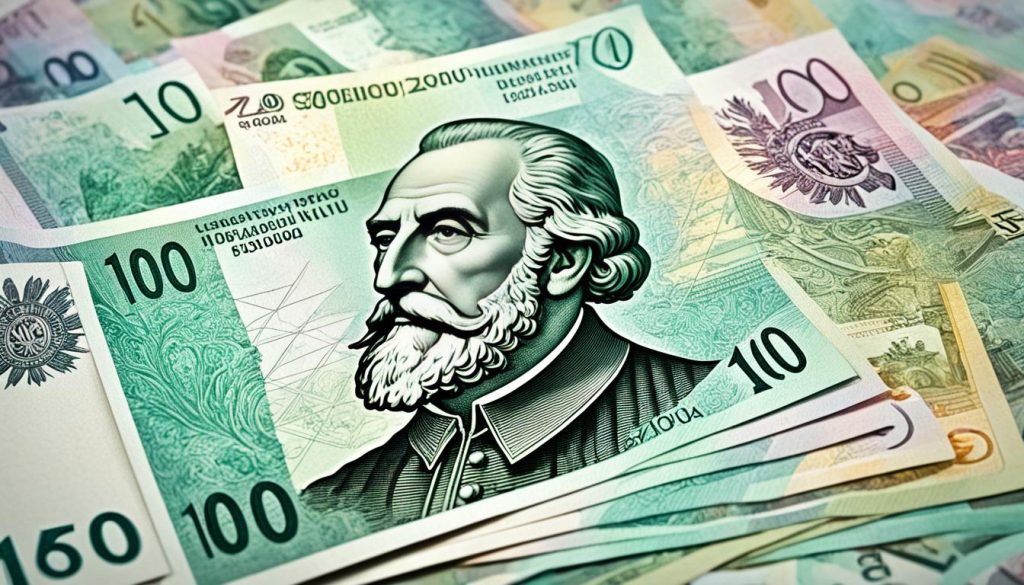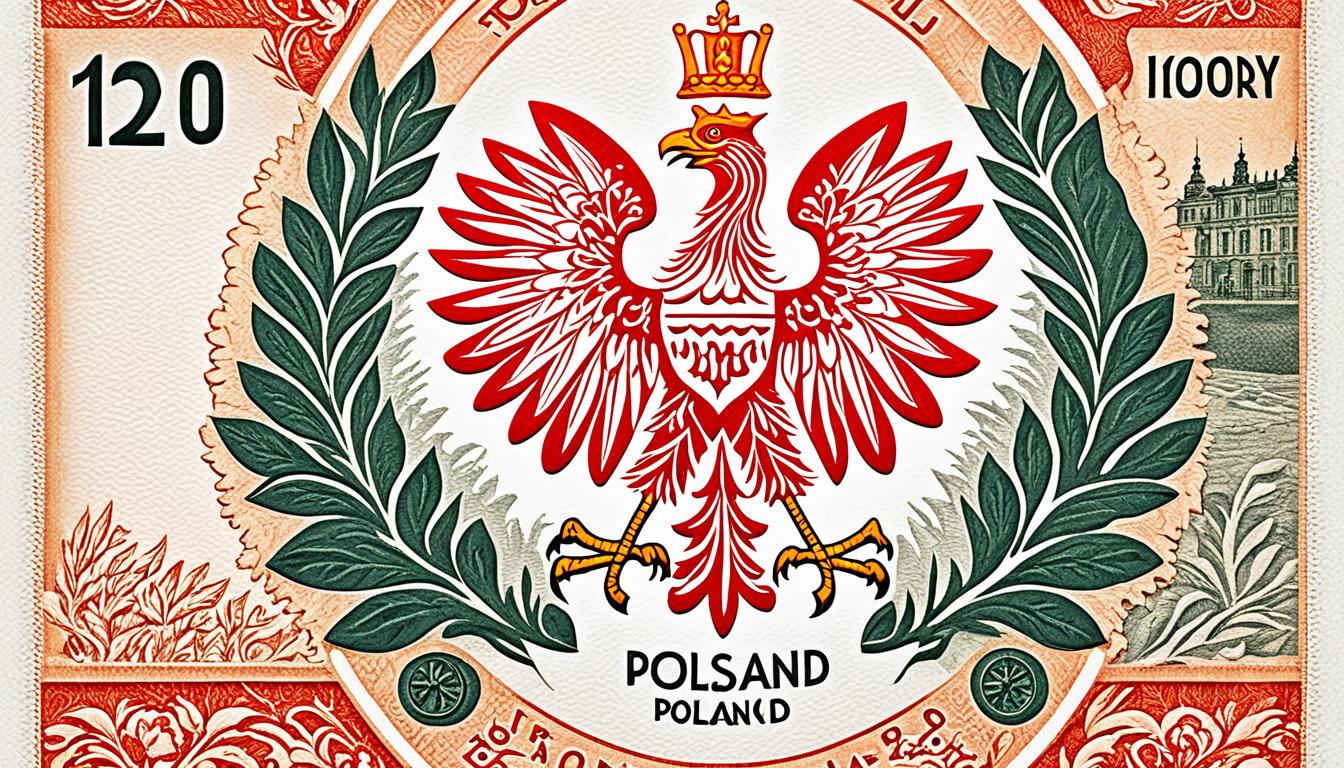Diving into the lively scene of the Polish economy, we find the sturdy monetary system it’s built upon, anchored by the Polish Zloty. This currency, known internationally as the ‘PLN currency’, steers Poland’s financial ship. It keeps business and trade smoothly sailing. For anyone from business folks to tourists, understanding the currency of Poland is key. It helps them navigate the market and handle money matters easily. The National Bank of Poland and the Polish Ministry of Finance keep the country’s finances in check. Meanwhile, organizations like the Bank for International Settlements highlight the Zloty’s significant spot in the world economy.
Key Takeaways
- Grasp the foundational elements of the Polish economy through its official currency.
- Understand the integral part the Polish Zloty plays in Poland’s monetary system.
- Recognise the indispensability of the currency of Poland for effective market engagement.
- The PLN currency is a barometer of Poland’s economic health and bears significance in international fiscal affairs.
- Tap into authoritative sources for in-depth knowledge on Poland’s currency, such as the National Bank of Poland.
The Polish Zloty: A Comprehensive Overview
Exploring the Polish Zloty, or PLN, tells a fascinating story. We aim to offer a deep understanding. We will look into its history, the unique aspects of its banknotes and coins, and the currency’s exchange dynamics. This is for those interested in numismatics and economics.
History of the Polish Currency
The story of the Polish Zloty goes back to the Middle Ages. It has evolved through many socio-economic changes. The name Zloty means ‘golden’ in Polish. It has been a key part of Poland’s identity, experiencing several reforms over the years.
The National Bank of Poland’s Currency Department mentions the Zloty started in the 14th century. It was a gold coin issued by Władysław I Jagiełło. This set the direction for Poland’s monetary policy.
The Zloty has changed a lot through history, especially during wars and partitions. It finally stabilised in the 20th century. This made it the symbol of an independent Poland.
Understanding the Polish Zloty (PLN): Denominations and Features
Today’s PLN includes different banknotes and coins. They have detailed designs that show Poland’s history. The banknotes feature important Polish figures and landmarks. They also have high-tech features to prevent counterfeiting.

The coins go from 1 grosz to 5 zlotys. They have designs of eagles, monarchs, and national symbols. This reflects Poland’s pride and its challenging history. The designs also help in fighting fraud.
Exchange Rates and Conversion to Other Currencies
Understanding PLN conversion rates is crucial for currency exchange. The Zloty’s value against currencies like the Euro and US Dollar shows Poland’s economic condition. Inflation, foreign investment, and the European Central Bank’s decisions influence these rates, says Reuters Financial Markets.
The current rates affect how much people can buy and Poland’s economic stance in international trade. This shows the importance of knowing about currency exchange and PLN conversion. It highlights the Zloty’s key role in the world’s financial market.
What Currency Does Poland Use?
In Poland, the main type of money used is the Polish Zloty (PLN). It plays a vital role in Poland’s monetary policy. The PLN helps set the stage for economic plans and keeps the country’s finances stable.
The Zloty is key for buying and selling every day and shows Poland’s independent economy. It shapes how the National Bank of Poland makes important money decisions. These include controlling inflation and making sure the financial system is solid.
Talks about changing to the Euro happen often. This change would be big for Poland’s money scene. The European Union has rules about the economy and money stability that Poland must meet. The National Bank of Poland and the International Monetary Fund (IMF) discuss these in detail.
So, the Zloty is more than just money. It reflects Poland’s economy and its choices for the future. Knowing about the Zloty helps us understand how Poland manages its economy and what it might do next.
Conclusion
We’ve looked closely at Poland’s economy and the big role of the Polish Zloty. It’s at the heart of the nation’s finances. Knowing about Poland’s economy shows us how influential the Zloty is. This currency marks Poland’s tough past and its key part in the economy now. It plays a major role in foreign exchange within Poland, affecting every financial level.
The Polish Zloty also stands out in global business. It shows Poland is financially stable and can make its own economic decisions. For businesses and investors, understanding the Zloty is crucial to succeeding in Poland’s lively market. It’s also vital for foreigners and global companies in Poland, as it impacts their investments and business plans.
In wrapping up, we stress the need to keep a close eye on trends affecting the Zloty. This watching helps everyone, from small investors to large firms, stay in tune with the Polish economy. In short, knowing how the Zloty works isn’t just academic. It’s essential for anyone looking to understand and thrive in a country with a rich history and promising economic future.
FAQ
What is Poland’s official currency?
The Polish Zloty, abbreviated as PLN, serves as Poland’s official currency. It is essential for financial exchanges within the country.
How did the Polish Zloty come into existence?
Dating back to the Middle Ages, the Polish Zloty has a rich history. Initially, it referred to gold coins minted in the late 14th century. In 1924, the modern Zloty was introduced, adjusting to economic shifts over time.
Are there different denominations of the Polish Zloty?
Indeed, the Polish Zloty is available in various denominations. Coins range from 1 grosz to 5 zlotych. On the other hand, banknotes start at 10 zlotych and go up to 500 zlotych. Each denomination has unique security features.
Can I easily exchange foreign currency into PLN?
Exchanging major foreign currencies into PLN is straightforward at banks and currency exchange offices. However, rates may vary, so checking current rates for the best deal is wise.
What is Poland’s stance on adopting the Euro?
Although Poland is in the EU, it hasn’t adopted the Euro yet. The country is evaluating the right conditions for this change. Joining the Eurozone requires meeting specific criteria and discussions with the European Central Bank.
How does the Polish Zloty influence the country’s economy?
The Zloty is crucial to Poland’s economy. It affects policies, pricing, inflation, and the foreign exchange market. Its stability is key to Poland’s economic health and global competitiveness.
Where can I find the most recent PLN exchange rates?
Recent PLN rates are on platforms like Reuters Financial Markets, at the National Bank of Poland, and banks. It’s key to monitor these rates, as they frequently change.
Are there any plans to change the currency of Poland?
Poland has no short-term plans to switch from the PLN. However, adopting the Euro could be considered in the future, following EU guidelines.
How does Poland’s monetary policy interact with its currency?
The National Bank of Poland oversees the monetary policy using the Zloty. It adjusts interest rates to control inflation and stimulate the economy, which influences lending and spending.
Is it important for businessmen to understand Poland’s currency?
Yes. Businessmen and investors must grasp the details of the Zloty. Understanding its role and the economic landscape aids in making sound financial choices.



